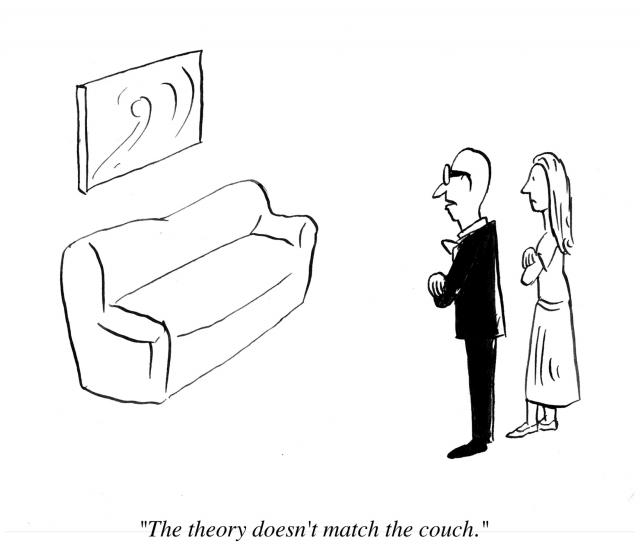“Tradition and the Individual Talent” (1919) is an essay written by poet and literary critic T. S. Eliot. The essay was first published in The Egoist (1919) and later in Eliot’s first book of criticism, “The Sacred Wood” (1920). The essay is also available in Eliot’s “Selected Prose” and “Selected Essays”.
While Eliot is most often known for his poetry, he also contributed to the field of literary criticism. In this dual role, he acted as poet-critic, comparable to Sir Philip Sidney and Samuel Taylor Coleridge. “Tradition and the Individual Talent” is one of the more well known works that Eliot produced in his critic capacity. It formulates Eliot’s influential conception of the relationship between the poet and the literary tradition which precedes them.
This essay is divided into three parts that are:
part one: The Concept of “Tradition”.
part two: The Theory of Impersonal Poetry.
part three: The Conclusion or Summing up.
Eliot presents his conception of tradition and the definition of the poet and poetry in relation to it. He wishes to correct the fact that, as he perceives it, “in English writing we seldom speak of tradition, though we occasionally apply its name in deploring its absence.” Eliot posits that, though the English tradition generally upholds the belief that art progresses through change – a separation from tradition, literary advancements are instead recognised only when they conform to the tradition. Eliot, a classicist, felt that the true incorporation of tradition into literature was unrecognised, that tradition, a word that “seldom… appear[s] except in a phrase of censure,” was actually a thus-far unrealised element of literary criticism.
For Eliot, the term “tradition” is imbued with a special and complex character. It represents a “simultaneous order,” by which Eliot means a historical timelessness – a fusion of past and present – and, at the same time, a sense of present temporality. A poet must embody “the whole of the literature of Europe from Homer,” while, simultaneously, expressing their contemporary environment. Eliot challenges the common perception that a poet’s greatness and individuality lie in their departure from their predecessors; he argues that “the most individual parts of his [the poet’s] work may be those in which the dead poets, his ancestors, assert their immortality most vigorously.” Eliot claims that this “historical sense” is not only a resemblance to traditional works but an awareness and understanding of their relation to his poetry.
T. S. Eliot, Tradition and the Individual Talent, 1919.
I
IN English writing we seldom speak of tradition, though we occasionally apply its name in deploring its absence. We cannot refer to “the tradition” or to “a tradition”; at most, we employ the adjective in saying that the poetry of So-and-so is “traditional” or even “too traditional.” Seldom, perhaps, does the word appear except in a phrase of censure. If otherwise, it is vaguely approbative, with the implication, as to the work approved, of some pleasing archæological reconstruction. You can hardly make the word agreeable to English ears without this comfortable reference to the reassuring science of archæology. 1
Certainly the word is not likely to appear in our appreciations of living or dead writers. Every nation, every race, has not only its own creative, but its own critical turn of mind; and is even more oblivious of the shortcomings and limitations of its critical habits than of those of its creative genius. We know, or think we know, from the enormous mass of critical writing that has appeared in the French language the critical method or habit of the French; we only conclude (we are such unconscious people) that the French are “more critical” than we, and sometimes even plume ourselves a little with the fact, as if the French were the less spontaneous. Perhaps they are; but we might remind ourselves that criticism is as inevitable as breathing, and that we should be none the worse for articulating what passes in our minds when we read a book and feel an emotion about it, for criticizing our own minds in their work of criticism. One of the facts that might come to light in this process is our tendency to insist, when we praise a poet, upon those aspects of his work in which he least resembles anyone else. In these aspects or parts of his work we pretend to find what is individual, what is the peculiar essence of the man. We dwell with satisfaction upon the poet’s difference from his predecessors, especially his immediate predecessors; we endeavour to find something that can be isolated in order to be enjoyed. Whereas if we approach a poet without this prejudice we shall often find that not only the best, but the most individual parts of his work may be those in which the dead poets, his ancestors, assert their immortality most vigorously. And I do not mean the impressionable period of adolescence, but the period of full maturity. 2
Source: National Academy of the Arts, Oslo.
Text: Wikipedia article, https://en.wikipedia.org/wiki/Tradition_and_the_Individual_Talent.
All images belongs to the respective artist and management.











